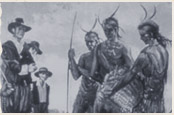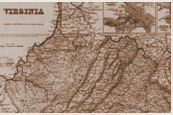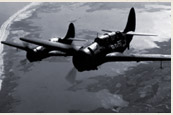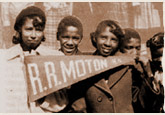Washington Crossing the Delaware, By Emanuel Leutze 1851
Metropolitan Museum of Art
Description: There are a myriad of factors which led to the colonists’ victory over England in the Revolutionary War. A couple of these factors can be illustrated through the painting of Washington Crossing the Delaware by Emanuel Leutze. This painting shows the Continental Army crossing the icy Delaware River on their way to the Battle of Trenton. First, it illustrates the “sneak attack” guerilla tactics the Continental Army employed throughout the war. This strategy prevented major loss of life and also was advantageous because the Continental Army knew and understood the lay of the land. Secondly, the dedication and spirit of the Continental Army was unmatched by the British professional soldiers or the hired Hessians. Once the Continental Army crossed the river, they found the Hessian mercenaries, who were supposed to be guarding the banks while the British regulars were inland at camp, to be absent. It was very early Christmas morning during the “off season” of fighting and they Hessians were off celebrating rather than at their posts. This link takes you to the Metropolitan Museum’s publication of the painting.
Teaching Tips:
"Do Now" Suggestions
- Discuss how images and people are portrayed in the painting and ask the students to create a list of characteristics of them.
- Discuss the particulars of the Battle of Trenton mentioning the exciting aspects: the sneak attack, secret march, and capture of Hessian troops without any shots being fired and the escape back across the river.
- There are a number of historical inaccuracies in the painting (the time of day, the flag, the impossible manner of how Washington is standing, and the type of boat). Ask students to guess what is wrong about the painting and possible reasons for why the painter chose to show the scene in that manner in 1851.
- Emanuel Leutze was a German studying in America when he completed this painting in 1851. Discuss how conditions in his home country of Germany influenced his choice of battle scenes to paint, and his choice of lighting and perspective in the painting.
- The one African American in the painting has been identified as Prince Whipple, a slave of William Whipple, a signer of the Declaration of Independence. Somewhat of a legend, Prince was granted his freedom before the Battle of Saratoga. Use the dramatic story of Prince’s emancipation as a springboard into a lesson on other African Americans in the Revolutionary War such as James Armistead and Peter Salem.



